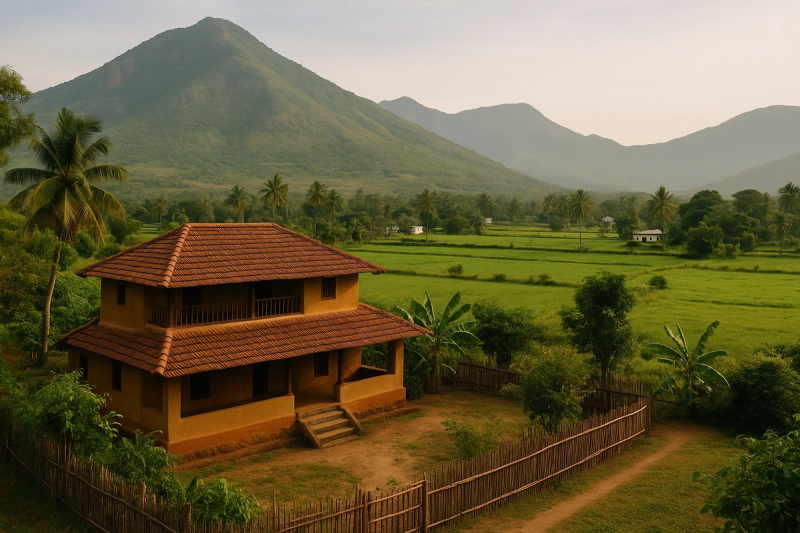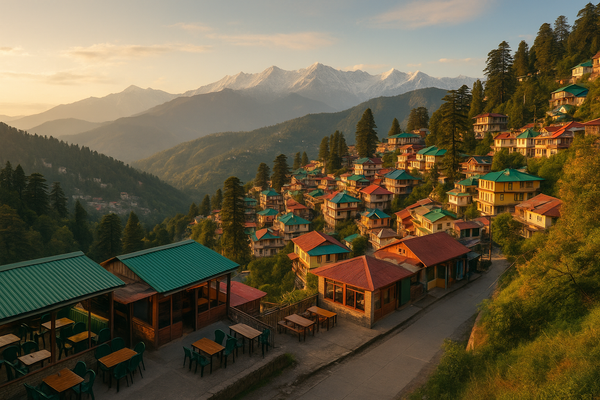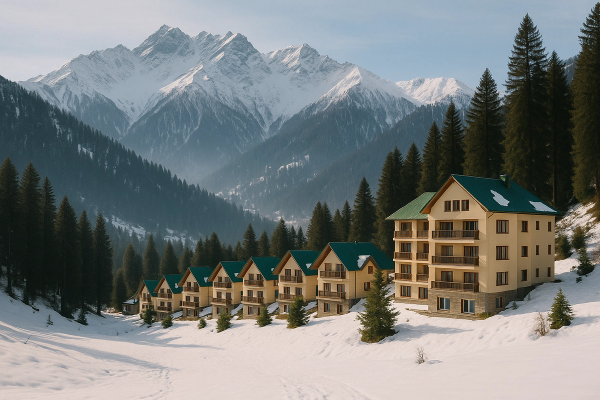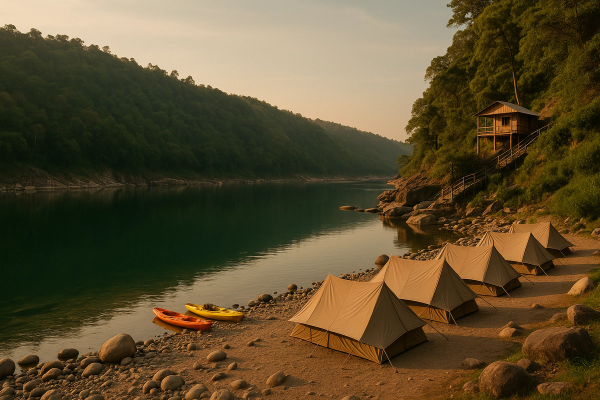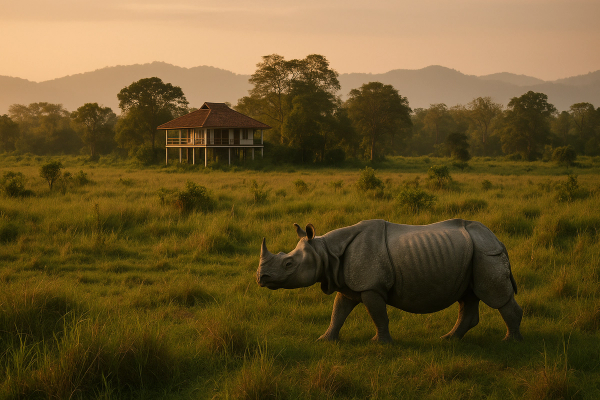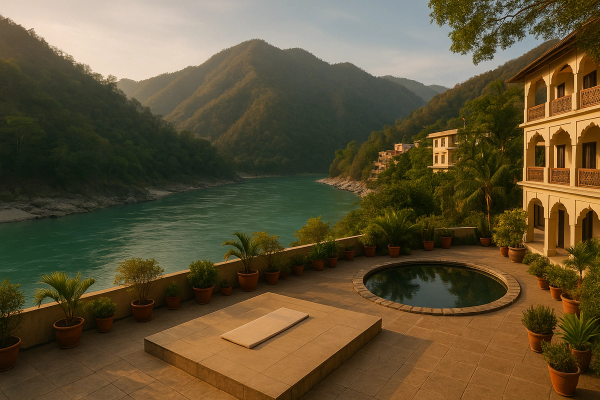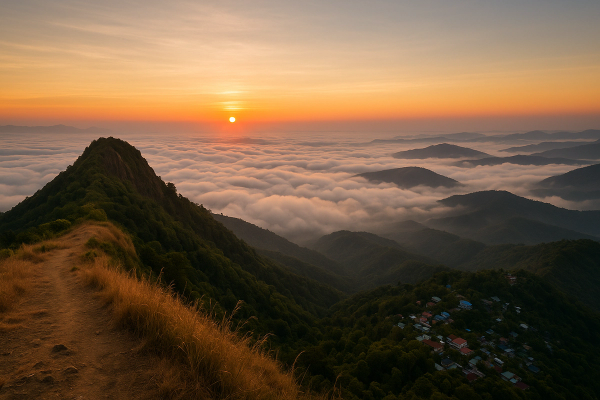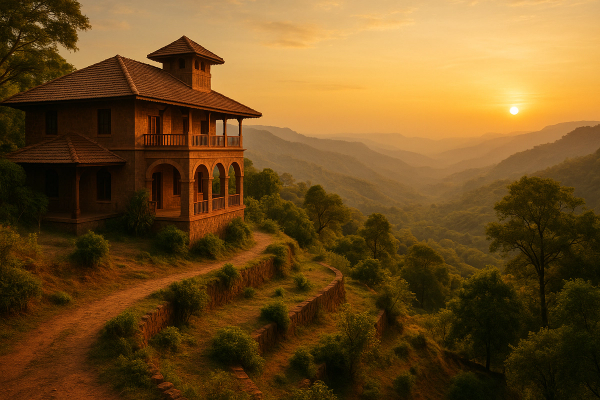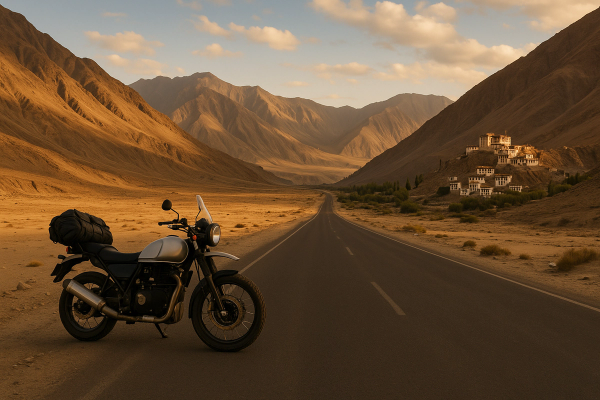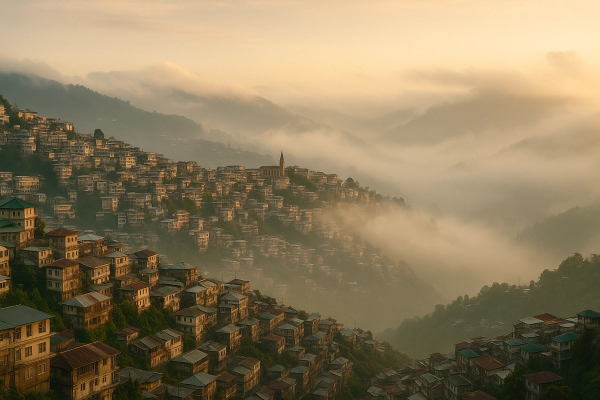How to Book Ethical Homestays in Rural India: Practical Guide — real talk from the gaon roads#
You know when you’re scrolling Insta and every second post is a mountain homestay with a wooden balcony and someone’s chai cup perfectly backlit? Been there. But behind those dreamy photos, booking a truly ethical homestay in rural India isn’t just click-pay-arrive. It’s a little messy. Some places are family-run and fair, some are… tourism washing the same old. I’ve spent a lot of nights in village homes from Kumaon to Kutch to Wayanad, slept next to mud walls and mango orchards, shared bathrooms, failed Hindi jokes, and learned the hard way how to not accidentally support exploitative stuff. So yeah, this is the practical guide I wish I had, mixed with my own blunders, some chai wisdom, and the current ground reality you’ll actually face on the road.¶
What does “ethical homestay” even mean here?#
For me, it’s simple-ish: the family actually benefits (financially, not just a token), local culture and environment are respected, and there’s transparency. No pretending to be a homestay while running like a cheap hotel with underpaid staff. In India, lots of states have sarkari schemes and guidelines — Kerala’s Responsible Tourism Mission has pushed community stays that use local produce and crafts, Himachal and Uttarakhand have homestay registrations under state policies, Sikkim and parts of the Northeast encourage village-level tourism with permits and community management. Platforms like NotOnMap and some curated networks (Ecosphere in Spiti, Himalayan Ark around Binsar) focus on community-led experiences that are more grounded. It’s not perfect, but it’s a start. Ethical also means you and me traveling like decent human beings: less plastic, fair prices, patience when the water heater is on strike.¶
Where do you actually find these homestays (minus the fake hype)?#
Okay, here’s what works. I use a mix: NotOnMap for rural stays and traditional homes; state tourism websites and local Facebook/WhatsApp groups (ask in district travel forums, random but gold); Airbnb and Booking filters for “Homestay” or “Farm stay,” then deep dive reviews for clues (mentions of family meals, village activities, fair pricing). Instagram isn’t useless btw — try hashtags like #responsibletourismkerala, #sikkimhomestay, #spitihomestay, #kumaonhomestay — then DM and ask awkward ethical questions. Also, talk to local guides, school teachers, panchayat folks at the bus stand. They will point you to real homes, not only the flashy cottages. Pro-tip: even if you find a place on a big platform, call the host directly, introduce yourself properly, and ask where the money goes. You’ll hear the truth in their voice, yaar.¶
What it costs now (roughly, so you don’t get shocked later)#
Typical rural homestays run ₹1000–₹2500 per room per night for a basic clean setup. Many include breakfast or a simple dinner, some do a full meal plan for ₹300–₹700 per person. Boutique or experiential community stays (think remote Himalayan villages, craft immersions) can be ₹3500–₹6000. Festivals or peak seasons push rates up, off-season is cheaper. Hosts increasingly accept UPI (GPay, PhonePe), but network can be moody in the hills and interiors, so carry cash, small notes. Deposits are normal now, especially around big events like Hornbill Festival or Rann Utsav — just make sure there’s a clear cancellation policy in writing (WhatsApp counts if the intent is clear). Don’t bargain like you’re at a wholesale bazaar; negotiate politely for meal plans or local experiences, but pay fairly. People are not line items.¶
How I vet hosts (and why it matters more than the view)#
- Ask about registration and basics: “Are you registered with the state homestay scheme or local panchayat?” Not every legit place has glossy certificates, but a clear answer is a good sign. Also double check safety stuff like clean water, emergency contacts, and if there’s mobile signal at least a corner of the courtyard.
- Money transparency: “If I stay 3 nights, what percentage goes to your family versus operators?” Even if they don’t give numbers, you’ll get a vibe. Ethical stays don’t hide the family, they introduce you to them.
- Local sourcing and waste: “Where do you get vegetables? Do you compost or segregate waste?” In many villages, kitchen waste feeds cattle or compost pits naturally. If they burn plastic regularly — big nope. Carry your own bottle and filter to help btw.
- Community involvement: “Any village walks, craft demos, farming activities?” Real homestays connect you with the gaon. If it’s only bonfire + DJ, it’s a resort in disguise, not a homestay. Also ask if kids or elders are comfortable with guests. Respect matters.
Long story short, I once booked a Konkan coastal homestay after the owner (a Koli fisherwoman, absolute star) walked me through how she buys fish from her brother’s boat, how guests help clean nets (optional!), and how she splits income with her cousin who manages bookings because she’s not very comfy with apps. Meals were basic — bhakri, solkadi, fried mandeli — but I swear it tasted like childhood summers. No staged stuff. When I asked about garbage, she flat-out said, “We’re figuring it out, don’t bring plastic packets. Bring a refill bottle.” That honesty… 10/10. I ended up staying two more nights than planned and helped fix a broken tap with jugaad. Felt like home, plus salty hair.¶
When to go, what’s up season-wise (and festivals worth the chaos)#
India’s rural calendar is the real boss. Himalayas (Himachal, Uttarakhand, parts of Sikkim): April–June and Sept–Nov are comfy, but monsoon can mean landslides and winter is icy cold unless you’re a snow person. Western Ghats (Coorg, Wayanad, Konkan): Monsoon June–Sept is lush and magical, but leechy and slippery trails — bring leech socks or salt. Rajasthan, Kutch, Gujarat: Nov–Feb is perfect; summers are brutal heat. Northeast (Nagaland, Meghalaya, Arunachal): Oct–April generally pleasant, but check permits and road conditions. Festivals to plan around: Hornbill Festival in Nagaland early December (book homestays months in advance), Ziro Music Festival in Arunachal late September (camping-homestay combos boom), Rann Utsav in Kutch Nov–Feb (craft villages nearby), Pushkar Fair in Rajasthan (Nov). Love them or hate crowds — either way, lock your stay early.¶
Getting there without a headache (or getting stuck behind a herd of goats)#
Rural travel is a multi-hop adventure. Trains are still king — IRCTC bookings, Vande Bharat on some routes, then state buses or shared Boleros/ Sumos from the last big town. RedBus works in many states, but ask locals at the bus stand for the unlisted early morning service that never shows online. Hosts will often arrange pickups by tempo or cousin’s hatchback for ₹400–₹1500 depending on distance. If you’re driving, check road updates the night before — monsoon means surprise landslides and washed-out culverts, especially in Himachal, Uttarakhand, and the Ghats. Fuel up early; EV charging is still sparse in interiors. Permits: parts of the Northeast need ILPs (Inner Line Permits) for Indians, and foreigners need additional Protected Area permits in some regions. Always carry physical copies of ID, and maps offline because network is like… now you see me, now you don’t.¶
Food, culture, those tiny etiquette things that save face#
Rural food is not a menu, it’s what’s fresh. Millets are back in a big way (after that national push, still going strong): ragi mudde in Karnataka, bajra rotis in Rajasthan, madua (finger millet) rotis in Uttarakhand. Assam and Arunachal homestays serve rice, greens, bamboo shoot dishes; Kerala might give you red rice, fish curry, thoran. In Kumaon, try bhatt ki churkani and bhang ki chutney (no, it won’t get you high), and in Konkan, kokum solkadi is life. Etiquette: remove shoes when entering rooms, ask before photos, dress simply, don’t blast music, and please don’t argue over spice levels — just say “thoda kam mirchi” with a smile. Offer to help lay the table or peel peas. And if you drink, check local rules; many villages frown upon loud booze sessions. You’re in someone’s home, not a party rental.¶
Safety + current updates (nothing dramatic, just real)#
Quick reality check. Most rural homestays are safe, especially family-run ones — you’ll meet kids, dadi, a dog who thinks you’re suspicious. Still, for solo folks (especially women), share your itinerary with a friend, reach before dark, and sleep in a room with a proper latch. Network is patchy; Jio generally best, BSNL weirdly reliable in some hills, but not guaranteed. Weather and roads change fast; IMD’s weather app, state PWD/traffic Twitter handles, and district admin pages are worth checking. Monsoon floods do happen; summer heatwaves are getting worse, so plan early starts and carry ORS. Basic first-aid, torch, and power bank are not optional. As of late 2024–2025, UPI works in most interiors but keep cash. Respect village timings — early sleep, early mornings. If something feels off, trust your gut and bounce politely. It’s okay to leave, ya.¶
A few rural homestays I’d personally vouch for (not sponsored, chill)#
Spiti, Himachal: Ecosphere-linked homestays around Kaza, Langza, and Komic — simple rooms, solar, local guides; ₹1500–₹3000 plus meals. Kumaon, Uttarakhand: Himalayan Ark community stays near Binsar — forest-edge, village walks, traditional meals; ₹2000–₹4000 depending on season. Sikkim (Dzongu): Lepcha family homestays curated by local networks — authentic food, river walks; ₹2000–₹3500. Wayanad, Kerala: Responsible Tourism Mission-connected homes in smaller panchayats — spice gardens, toddy tastings (legal areas), ₹1500–₹3000. Kutch, Gujarat: craft village homestays around Bhujodi/Khavda — block printing, pottery, salt pans day trips; ₹1200–₹2500. Assam (Majuli): satra-adjacent homestays — simple bamboo huts, ferry logistics; ₹1000–₹2000. Maharashtra (Konkan belt): family-run coastal homes — fish thali, laterite courtyards; ₹1200–₹2500. Prices swing, so ask what’s included and don’t expect resort service. Expect warmth, wild stories, and occasional power cuts. The good kind of real.¶
Final plug from an un-perfect traveler: book slow, verify kindly, carry your own bottle, and remember we’re guests in someone’s everyday life. Ethical homestays aren’t about perfect decor or fancy towels — they’re about fair money, mutual respect, and that feeling when the host’s kid hands you a mango and calls you “didi” or “bhaiya.” If you want more messy, practical travel guides like this (and places I messed up and then figured it out), I keep sharing on AllBlogs.in — swing by, say hi, and drop your own homestay finds too. Let’s keep it real, responsibly.¶

